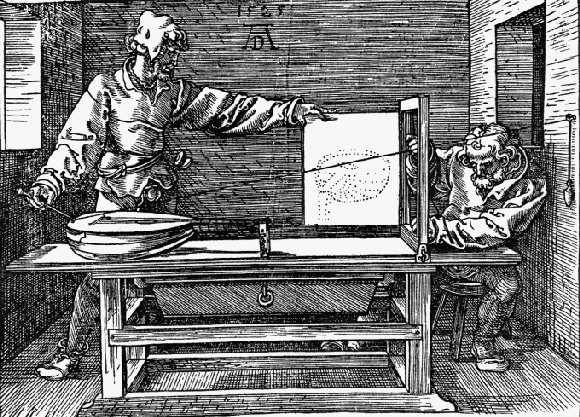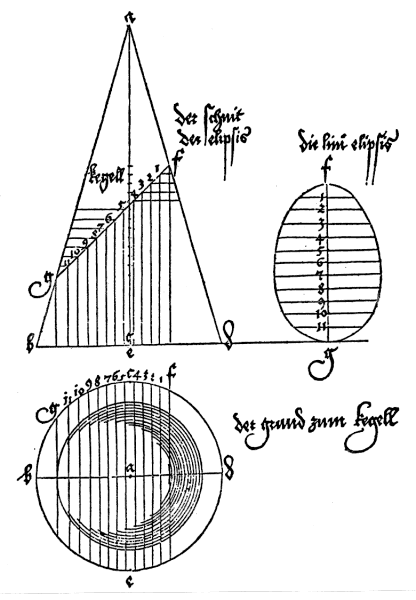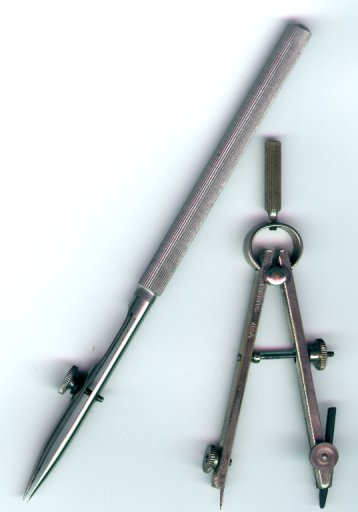Albrecht Durer
Today let's meet Leonardo da Vinci's northern counterpart. The University of Houston's College of Engineering presents this series about the machines that make our civilization run, and the people whose ingenuity created them.
Albrecht Dürer was born in Nüremberg in 1471 -- 19 years after Leonardo da Vinci. He was to Germany what Leonardo was to Italy -- a great artist, humanist, and student of nature. Still, the two were not at all alike.
Dürer's greatest works were his marvelous prints. If you've seen nothing else, you've seen copies of his famous "Praying Hands." You find them in every curio shop. We could easily forget the remarkable conviction -- and anatomical perfection -- of the original, when we've seen a thousand versions in black velvet and bronze-painted plaster. Those indignities are matched only by the ones inflicted on Leonardo's "Last Supper."
Dürer was trained as a goldsmith. Behind his art was the mind of a superb technologist. Leonardo was more the scientist, and Dürer more the engineer. Both were powerfully curious about the nature of things; but Leonardo was more determined in getting at truth through direct observation. Dürer, on the other hand, had greater technical control of his art. Leonardo's soaring imagination was expressed in his marvelous ability to show us what his eye saw. Dürer's was expressed in the powerful combination of startling realism with the symbolic language of his time. Dürer was in the center of the intellectual life of his day -- everything from the Protestant Reformation to mathematical analysis. He and Leonardo show us that subtle line between pure observation and analytical synthesis. They walked on different creative paths.
In 1505 Dürer went to Italy to study Italian advances in perspective drawing. He learned what the Italians knew. Then he came back and recast that art in the language of Euclidian geometry. His first volume was titled "A treatise on Constructions with Compasses and Rulers." An original copy in our library is hauntingly close to one of my old engineering texts. I see my old homework problems among his constructions. The second volume, titled "Four Books on Human Proportion," continues to exploit his fascination with, and his command of, formal geometry.
Dürer's full mastery comes clear in his late engravings. Our eye roams these pictures from detail to detail, through layers of symbolism, then back to the whole. The depth of field is astonishing. As our eye takes us into the picture, we feel we're physically walking through rooms. Our interest is carried from element to element the same way it's carried by a fine storyteller.
Dürer harnessed one of the really dazzling minds of the Renaissance to an engineer's clarity and analytical sense -- with astonishing results.
I'm John Lienhard, at the University of Houston, where we're interested in the way inventive minds work.
(Theme music)
Dürer, A., Underweysung der Messung Mit dem Zirckel un Richtscheyt, in Linien, Nuremberg: 1525. (I am grateful to Pat Bozeman, Head of special Collections, UH Library, for drawing my attention to this first edition of this remarkable source.)
See also any of the standard biographical sources for additional material on Leonardo and Dürer.

Mechanical creation of a perspective image by Albrecht Dürer

A modern exercise in descriptive geometry, first done by Albrecht Dürer.
(Both images above from Underweysung der Messung ..., courtesy of Special Collections, UH Library)

A 20th century compass and ruling pen